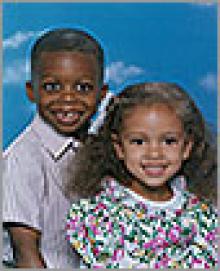 By Yvonne Stewart
By Yvonne Stewart
Special to CSMS MagazineFor me, it was truly amazing to read this article by a white person who does see what many people of color have to deal with on a daily basis. It is nice to see why it is quite difficult to get many whites, and some blacks, to see that racism still exists today. Many Whites believe that because there have been no Emmit Till lynchings, Church bombings, Selma marches, SNCC student sit-ins etc. as in the 1960s, or the Watt riots, or the midnight raids of the Klu Klux Klan, that America has truly overcome its racist past. However, many people of color continue to realize that racism is still an integral part of their daily life in America. Just because one or two African Americans or Hispanics enjoy living in the suburbs, or hold political offices, or have millions of white fans, it does not mean they are immune to discrimination. Nor can this be an interpretation of the end of racial prejudice in this country. At any given moment, if they are in the wrong place, at the wrong time, they can be treated as criminals, or thieves, or as nobodies. As an early childhood educator, I know it is important that I teach children to cooperate with each other so that they can get along together. I work for Head Start, a program that encourages its entire staff to promote multiculturalism. We teach our children and families the importance of respecting home languages and cultures as a means of finding ways to grow as a community and nation. I am able to show my children and families that, though we may sometimes look different or talk different, we are alike in many, many ways. When we recognize and respect our individual differences, we learn new things, and we make new friends. As I read through the list of fifty things that the author offered as instances of white privilege, I could actually remember times in my life where being African American resulted in my not enjoying a white privilege. For instance, the author states that “I can go shopping alone most of the time, pretty well assured that I will not be followed or harassed.” I have quite a few friends who have shared their personal experiences while shopping in Dullards, especially the one in International Plaza. Now I will admit that I personally stopped going to Dullards some time ago, even before a 60 Minutes special that dealt with racial profiling in department stores. It was the result of an incident involving a Black man and his son in a Dullards store, and the man was suing Dullards. If you do not fit the “white professional” profile when you enter Dullards, the security staff will actually follow you around the store. If you begin to just pick up items to better examine them, store security move in closer. You’d better not hold an item too close to your body—be it a purse or bag. The security people are already in your face. Since I wear dreads and very seldom carry a purse, I am tailed until I leave the store. Now if I purchase something and I am not paying in cash, I am thoroughly checked out. I have been in line behind white customers who have purchased several hundred dollars on their credit card. If the card had not been expired, it was simply swiped through the imprint machine. When it was my turn, and my purchase was under fifty dollars, I had to show my driver’s license and waited until they called the for approval. If the line were busy, the cashier would not spend his/her time trying several times to get through. If I did not have cash or a check, then I would have to come back later. Can you imagine how I felt? I do not allow banks to give me bills larger than a $20 because I have had store clerks refuse to take the bill for they thought it was counterfeit. It was one of those days when I had on worn-out jeans, T-shirt, and tennis shoes. The clerk actually thought I had stolen the money. Unfortunately, my experiences and that of many of my family members affirm much of what the author presented. Therefore, it makes me more sensitive to those students in my class. When I send home activities, I make sure that I send home all the materials needed, even the pencils and crayons because many of my family members do not have them. I never use food for activities because I think their family members would need that rice and beans for better use. I always make sure that I show respect to all my family members and that I take nothing for granted. I also know that most of my children will have white teachers when they go to kindergarten, so I stress to them the importance of following directions and paying attention. I also work with many parents in order to help them to understand the expectations and how to continue to partner with their children’s teacher when their children go to kindergarten. I have visited schools and noticed the disparity of funding for materials and supplies in areas where many of the children are of color, and I have also noticed that many of the school staff members and administrators have low opinions and expectations about children of color. So, I make sure that my children know that they are somebody.Note: Yvonne Stewart is teacher in Miami Dade County. She wrote this piece exclusively for CSMS Magazine. The author is referring to the “white privilege” article written by Peggy McIntosh.Also see A thought on Peggy McIntosh’s essay on White privilege

